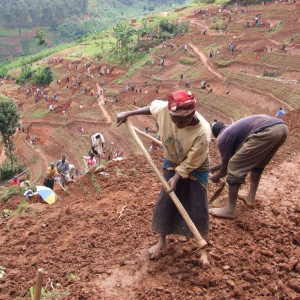
This article by agricultural researchers in Spain reviews the historical changes in land use and soil management practices, and examines how these changes have contributed to soil erosion in the past, before presenting modelling data to show how soil erosion may impact on agricultural yields in the future.
The review begins by explaining the constraints on our ability to produce sufficient food for our growing population and identifies soil erosion as a major limiting factor in the ability of crop yields to be sufficiently increased. The authors recount the broad history of land use change, soil management change, soil erosion and the impacts of these processes on global soil resources. They identify the link between soil erosion and, ultimately, crop yields as a major knowledge gap.
In section 2, the article critically reviews the multiple theoretical approaches that may be adopted when seeking to understand the key drivers of changes in land use and management. This includes a discussion of whether agricultural intensification really leads to land-sparing, and the extent to which population density increases account for this intensification.
In section 3, attention is turned to the effects of land use intensification on soil erosion. This includes a compilation of region-specific soil erosion case studies and an analysis of the correlation in time between the first detectable land use changes in world regions and the first detectable significant soil erosion in those regions.
Similarly to section 3, section 4 examines the effects of soil management changes on soil erosion. Soil management changes in this context refer to, for example, intensification of agricultural practices, or, conversely, the implementation of conservation measures such as terracing. The article uses two case studies to highlight how soil management differences may dramatically modify the link between land use and soil erosion.
In the fifth and largest section, the article evaluates the limitations and drawbacks of the various simulation models that may be used to analyse, firstly, past and future soil erosion, and, secondly, future agricultural yields and sustainability in relation to this soil erosion.
The article concludes that it will be important to continue research and development of models to predict future crop yields based on soil erosion, and that understanding localised soil management practices and technologies will be essential for this endeavour.
Abstract
Since prehistoric times, farmers have faced the challenge of balancing the demand for increasing food production from existing soil resources with conservation of these resources. Land use change from natural vegetation to agricultural land and intensification of agricultural soil management are closely linked to increased rates of soil erosion. This review analyzed and quantified the effects of changes in past land use and agricultural soil management on soil erosion. At a global scale, the period of the first significant land use change closely corresponds to a first wave of soil erosion. Equally important, however, are changes in past soil management. As shown by numerous case studies, changes in management under the same land use can convert sustainable agroecosystems into highly degraded systems. As soil erosion rates, soil profile truncation, agricultural yield, and biomass production are closely related, considering the interactions and feedback effects is important when modelling this system. This paper shows how modelling the dynamics of past soil erosion and agricultural sustainability raises similar challenges to those of quantifying future changes in climate or agricultural systems.
Reference
Vanwalleghem, T. et al. (2017). Impact of historical land use and soil management change on soil erosion and agricultural sustainability during the Anthropocene, 17, pp.13–29.
Read the full review here.







Post a new comment »